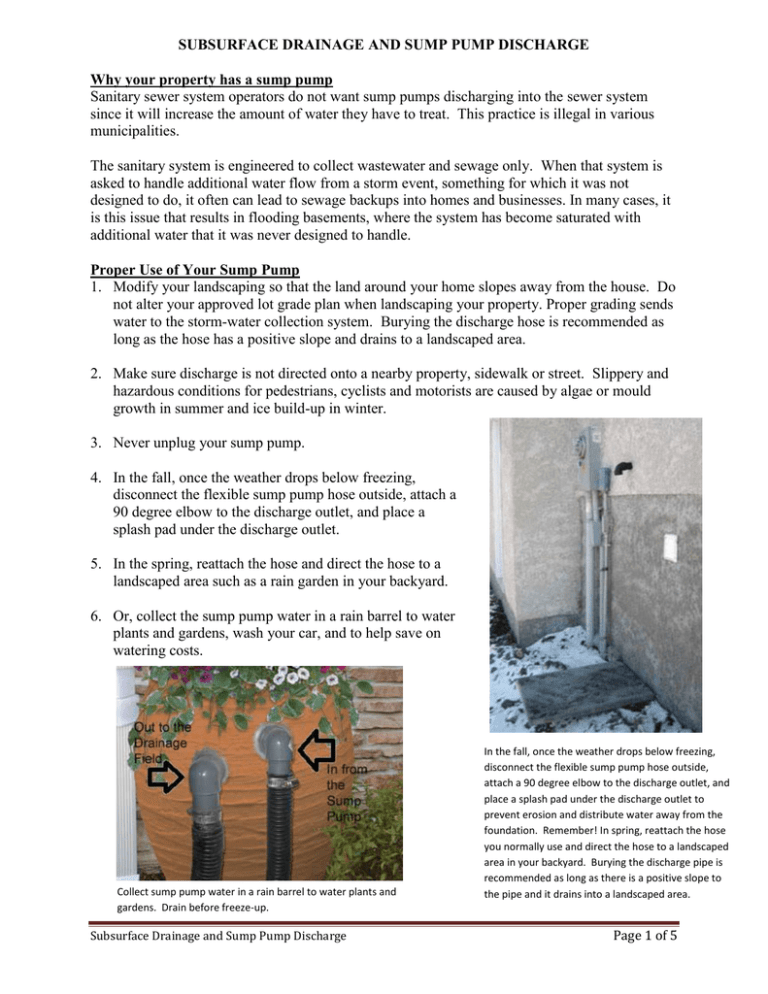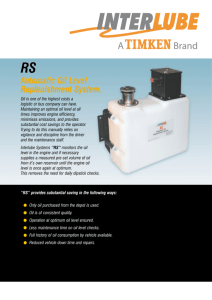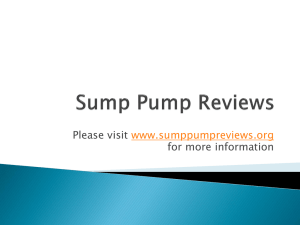SUBSURFACE DRAINAGE AND SUMP PUMP DISCHARGE Why
advertisement

SUBSURFACE DRAINAGE AND SUMP PUMP DISCHARGE Why your property has a sump pump Sanitary sewer system operators do not want sump pumps discharging into the sewer system since it will increase the amount of water they have to treat. This practice is illegal in various municipalities. The sanitary system is engineered to collect wastewater and sewage only. When that system is asked to handle additional water flow from a storm event, something for which it was not designed to do, it often can lead to sewage backups into homes and businesses. In many cases, it is this issue that results in flooding basements, where the system has become saturated with additional water that it was never designed to handle. Proper Use of Your Sump Pump 1. Modify your landscaping so that the land around your home slopes away from the house. Do not alter your approved lot grade plan when landscaping your property. Proper grading sends water to the storm-water collection system. Burying the discharge hose is recommended as long as the hose has a positive slope and drains to a landscaped area. 2. Make sure discharge is not directed onto a nearby property, sidewalk or street. Slippery and hazardous conditions for pedestrians, cyclists and motorists are caused by algae or mould growth in summer and ice build-up in winter. 3. Never unplug your sump pump. 4. In the fall, once the weather drops below freezing, disconnect the flexible sump pump hose outside, attach a 90 degree elbow to the discharge outlet, and place a splash pad under the discharge outlet. 5. In the spring, reattach the hose and direct the hose to a landscaped area such as a rain garden in your backyard. 6. Or, collect the sump pump water in a rain barrel to water plants and gardens, wash your car, and to help save on watering costs. Collect sump pump water in a rain barrel to water plants and gardens. Drain before freeze-up. Subsurface Drainage and Sump Pump Discharge In the fall, once the weather drops below freezing, disconnect the flexible sump pump hose outside, attach a 90 degree elbow to the discharge outlet, and place a splash pad under the discharge outlet to prevent erosion and distribute water away from the foundation. Remember! In spring, reattach the hose you normally use and direct the hose to a landscaped area in your backyard. Burying the discharge pipe is recommended as long as there is a positive slope to the pipe and it drains into a landscaped area. Page 1 of 5 Collect sump pump water in a rain barrel to water plants and gardens, wash your car, and save on watering costs. Drain barrel before freeze-up Rain Gardens A rain garden can be built in the front or back yard. Pick a pleasing shape for a rain garden. Crescent, kidney, and teardrop shapes work well. Subsurface Drainage and Sump Pump Discharge Page 2 of 5 Rain gardens should be located at least 10' from the house, on a gentle slope that catches downspout water or sump pump discharge. For more information on how to attach sump pump to rain barrel: http://www.thehopelesshobbyist.com/garden/daulfeedrainbarrels For more information on rain gardens: http://clean-water.uwex.edu/pubs/pdf/rgmanual.pdf http://clean-water.uwex.edu/pubs/pdf/gardens.pdf Subsurface Drainage and Sump Pump Discharge Page 3 of 5 APPENDIX 'A' Several ways to install sump pump discharge outlet IMPROPER INSTALLATION PROPER INSTALLATION Downspouts drain onto ground Downspout drains into sewer line Downspout drains into drainage sump Sump pump discharges into ground, drainage ditch or storm sewer Sump pump discharges into sewer line SUMP PUMP SUMP PUMP PUBLIC SANITARY SEWER LINE DRAINAGE SUMP PUBLIC SANITARY SEWER LINE DRAINAGE SUMP Downspout Splash Pad CLOSED POSITION Prevents surcharge from backing up into the building OPEN POSITION Permits normal operation of building sewer connections Sump Pump BACK FLOW VALVE Cleanout Weeping Tile Connected to Sump Pit Sewer Connection BACK FLOW VALVES AND SUMP PUMPS ARE EFFECTIVE MEANS OF AVOIDING BASEMENT FLOODING In existing homes experiencing basement flooding due to sewer backup, an effective prevention strategy is to install a sump pump and a back flow valve. This type of installation must normally be approved by the municipality and it is recommended to have the work performed by a qualified plumbing contractor. Subsurface Drainage and Sump Pump Discharge Page 4 of 5 For the outlet through the foundation, choose a side of the house where soil provides good drainage. Inside the basement, about 10 inches below ground level, make a hole through the wall large enough for the discharge pipe. Outside, locate the outlet hole by digging at the foundation. Push a 2-foot length of discharge pipe through the hole in the wall so it protrudes equally on either side. On the outer end of this pipe, install a check valve—with the arrow pointed away from the basement—to prevent backup of water and to intercept any small animals. Excavate a trench 1 or 2 feet wide to hold perforated drain tubing or, if the soil offers poor drainage, to lead un-perforated tubing to a dry well or storm sewer. The trench floor should be inclined away from the house so water will not collect and freeze in the tubing in winter. OR Subsurface Drainage and Sump Pump Discharge Page 5 of 5


